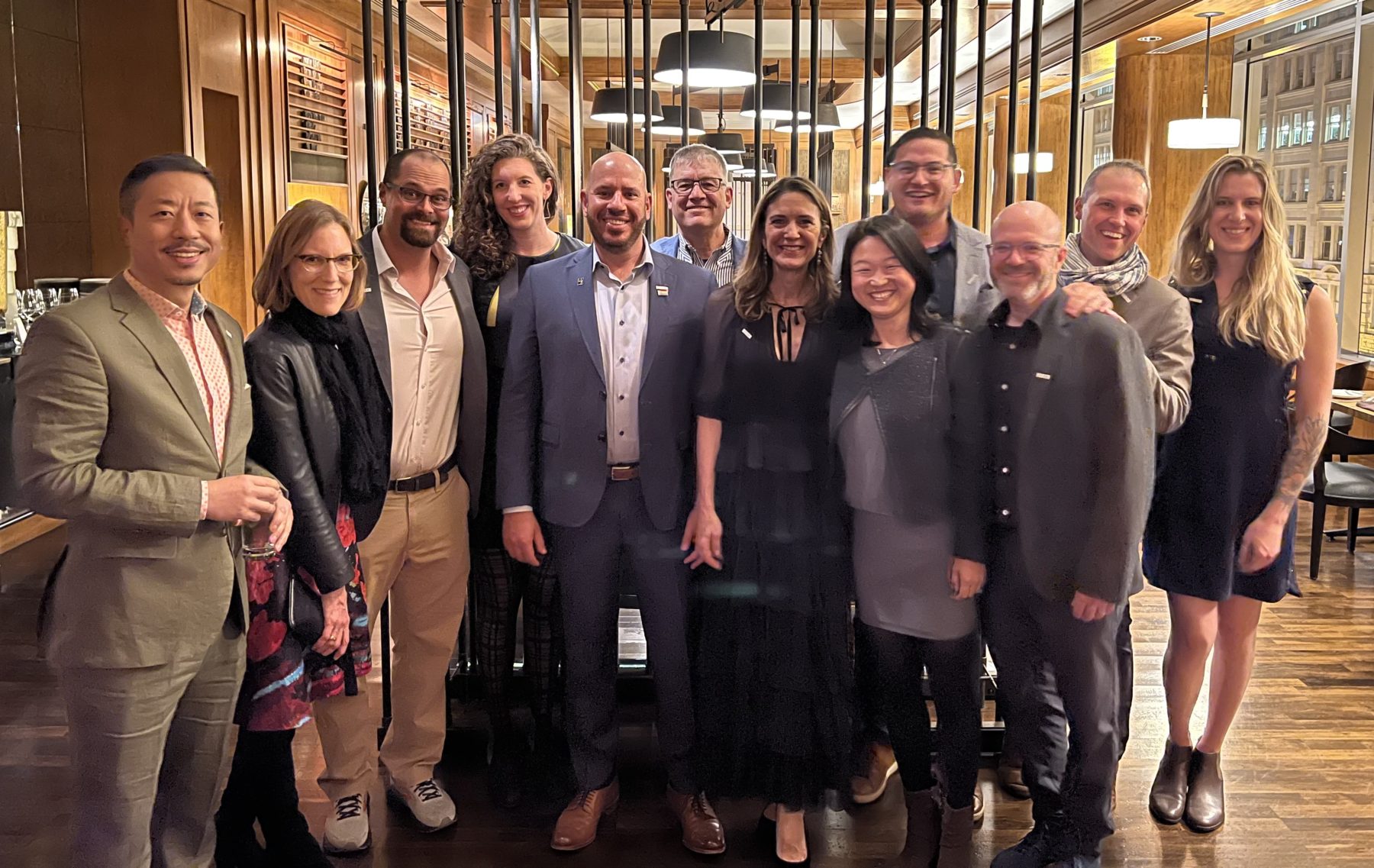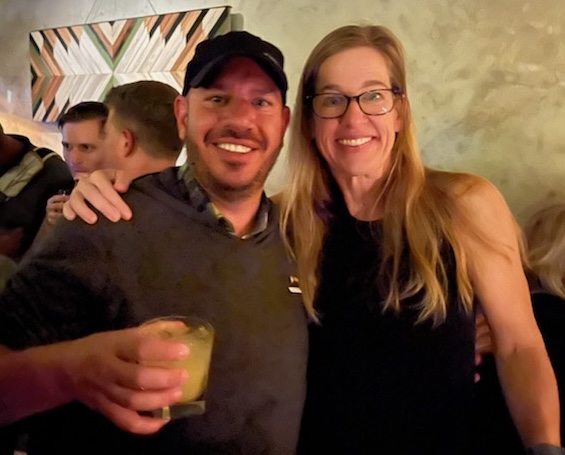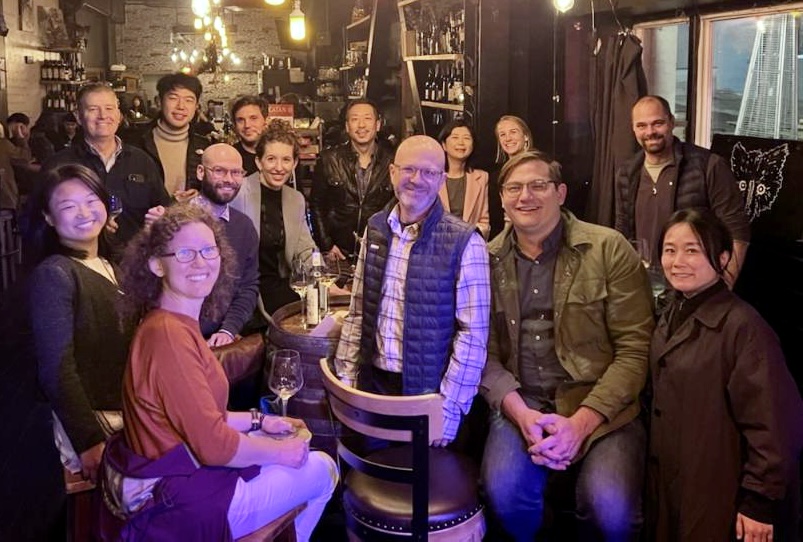Sasaki Leaders Speak at 2022 ASLA Conference
Sasakians discuss universal design, successful design writing, post-industrial landscape design, and more
 Sasaki
Sasaki

Autumn in New England is my favorite time of year, but my busiest time professionally. It’s also conference season, which is both a blessing and a curse. Conferences enrich our professional knowledge and grow our networks, while pulling us away from home and our families for something that feels a bit more self-indulgent than the usual project-related work travel.
To say that I return from all conferences feeling energized would be a lie, but returning from the ALSA Conference on Landscape Architecture always reinvigorates me. In fact, I think it’s pretty fortuitous that ASLA is generally close to Thanksgiving, as it allows me to more carefully examine my gratitude – gratitude that I feel as though I’ve found my professional calling in life; gratitude that I’ve found an incredibly nurturing and supportive workplace culture at Sasaki with some of the most talented and kind people I could ever hope to meet; and gratitude that I live in a time where the boundaries between my work life and home life are so blurred (in the best of ways!) that I’m able to live authentically every day. I know not everyone in our profession is able to attend the ASLA conference every year, and with that I wanted to share my top five moments from San Francisco in the hopes that they will inspire others to get involved.
Never has obtaining the Continuing Education Credits required for maintaining licensure (ah, the dreaded CEUs!) been so much fun! ASLA carefully cultivates the education sessions each year such that there is incredible variety. And sometimes the panels that sound like they might not be your cup of tea turn out to be the most interesting. I intentionally seek out a diverse mix of sessions that I feel I might relate to, as well as those outside of my comfort zone – a strategy that I have found pays off big time.
This year I attended panels on topics ranging from “Confronting the Biodiversity Crisis” to “LGBTQ+ Cultural Landscapes” to learning about “The Olmsted in All of Us.” Each one of them taught me something that will make me a better professional. More importantly, these panels presented information without ego – professional peers simply sharing best practices without bragging. Though with that, I will brag that 9 Sasakians presented on 10 different panels this year. I think that is a testament to the firm’s culture of continuous learning and sharing.
There’s no better feeling than when people just *get* you. The usual cocktail party frustration of explaining what a landscape architect does evaporates when you’re with your people. Throughout the conference, I felt the overwhelming sense of camaraderie and care we have for each other as a small professional community.
Although Department of Labor statistics show that there are only about 22,500 landscape architects in the entire country, we are a mighty force, which is amplified when we are together. Maybe it’s because of COVID and the pent up need we have for fellowship and community, but I tend to think that it’s more about a renewed sense of purpose and vision for the profession of landscape architecture, and our shared mission to change the world for the better despite everything it keeps throwing at us (I’m looking at you climate change, biodiversity loss, social equity, and environmental justice!).

Michael Grove (Sasaki) and Cheri Ruane (Weston and Sampson) – the unofficial “parents” of gAySLA
This is related to #2 above – being with your people. But for me, it’s even more than that… It’s the validation that comes from being our authentic selves and having a forum to let your hair down (or put your wig on) without feeling vulnerable. Inspired by WxLA and BlackLAN, the time felt right to explore another affinity group for people who identify as LGBTQ+ in the profession. The idea began at last year’s ASLA conference in Nashville in a text message exchange between me, Cheri Ruane at Weston and Sampson, and Kris Pritchard at ASLA, and we thought we’d test it out in San Francisco (because duh!). What began as a social media post a few days before the event took off like wildfire. The number of people who showed up at what we thought was going to be an intimate gathering was validation that this group of LGBTQ+ professionals was seeking, well, validation. So for the 2023 conference in Minneapolis, the gauntlet has been thrown and we’ll be planning something bigger and even more fabulous.
I am privileged in that I serve as the President-Elect for the Landscape Architecture Foundation (LAF) and have a seat at the table of the CEO Roundtable (which is comprised of the leaders of about 25 influential firms). My role at LAF gives me an opportunity to give back to the profession by transparently sharing ideas and lessons learned for what a shared vision of a more inclusive profession might look like.
At LAF, I am proud that I worked with so many other dedicated board members and staff to raise over $2 million that allowed us to launch LAF Ignite – a scholarship program for black landscape architects at an accredited institution that will not simply offset some of the costs of education, but more importantly provide internships and access to lifelong mentors that will set them up for future success in the profession. That’s what I love about LAF – it’s consistently at the forefront of the profession, whether through the Olmsted Scholars network, the Fellowship for Innovation and Leadership, or the Landscape Performance Series and Case Study Investigations program. LAF is doing so much to advance the impact of landscape architecture – and we’re just getting started! Ask me about “infiltration” if you want to know more about our vision for a world in which landscape architects are influential and ubiquitous.

Current Sasakians and Sasaki alum gather at the conference
One thing I learned from Charles Birnbaum of The Cultural Landscape Foundation in his talk at the conference about “The Olmsted in All of Us” was that Olmsted’s firm embedded people in positions in the government, park commissions, etc. that would further the work of the firm and of landscape architecture at large (I’m looking at you, Diana Fernandez and Breeze Outlaw!).
We also see Olmsted employees (Warren Manning, William Lyman Phillips, etc.) leave to start their own successful practices, learning from the experience and mentorship they received there. This trend continued in the mid-20th century when Peter Walker opened Sasaki’s west coast office in San Francisco that eventually became SWA, and after that when he left SWA and formed PWP. This continues to manifest itself today in the best of ways. Much like a university, the Sasaki alumni network is broad, talented, and influential – leading the profession forward with the knowledge gained at Sasaki. What Hideo Sasaki started in 1953 has become an incredible incubator of contemporary landscape architecture, and I couldn’t be more proud of the firm as it is today and of the people for whom it has been a springboard to define their own explorations in the field.
I hope to connect with even more of you in Minneapolis for the 2023 conference!